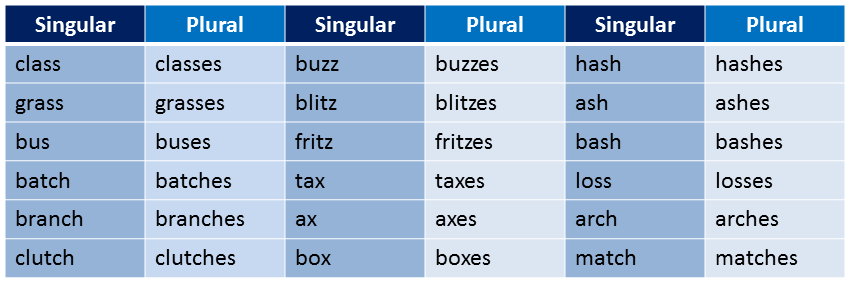This is Lesson 5 of our Basic English Series.
Parts of Speech 1.2
Nouns Part 2 – Numbers of Noun
- Singular number – A noun is singular in number when it refers to one person, place or thing.
- Plural number – A noun is plural in number when it refers to more than one person, place or thing.
Here are few examples before we move on to the seemingly complicated aspects of the numbers of noun.

As you noticed, the plural number of four of the examples above are different from each other. There are different rules that apply with most of the forms of the numbers of nouns, especially in writing. However there are cases that the rules won’t apply, and the only way to recognize these differences is to familiarize yourself through constant reading and the use of a reliable dictionary. This site was also setup with that in mind to help our visitors and readers. Daily reading, even for a few minutes, along with the constant use of new words you learn in your daily conversations, will result to an increase in these words you will be familiar with and retain them in your memory.
In the above examples there is one basic rule in changing a singular noun into plural. It is by adding a letter ‘s’. However there are singular nouns that follow certain rules when changing them into their plural forms. In this lesson we will mention the second rule in in dealing with nouns in the English Language, and the fourth in the English Grammar System.
Again, we call these English Language Grammar Rules (ELGR). Here is the rule:
ELGR4: Most nouns add letter s to the singular to form the plural.
Examples:

How is this rule used when nouns are part of the sentence? Here are some examples:
- The apple is already ripe for harvesting. (Singular)
The apples are already ripe for harvesting. (Plural) - The teacher is preparing her students for the competition. (Singular)
The teachers are preparing their students for the competition. (Plural) - We will study the Bible on Sunday. (Singular)
We always study the Bible on Sundays. (Plural)
What about the second, third and fourth nouns in our first example above? Let us take a closer look at the rule that was used on the second noun, box. Here is noun application rule number three, and number 5 in the English Grammar.
ELGR5: Nouns ending in s, sh, ch, x, or z form the plural by adding es.
Examples:

Again, how is this rule used when nouns are part of the sentence? Here are some examples:
- The box is ready for delivery. (Singular)
The boxes are ready for delivery. (Plural) - Your tax is used by the government to provide roads and other services. (Singular)
Our taxes are used by the government to provide roads and other services. (Plural) - The bus is full. (Singular)
All the buses are full. (Plural)
Please take note of the different words that were used in the above examples as were will be using them again to explain the other parts of speech of the English Language in this lesson series.
So far we have partially covered nouns in this lesson. Let us move on to see other rules in converting singular nouns into their plural forms.
You may also jump to the lessons you want to see below.
